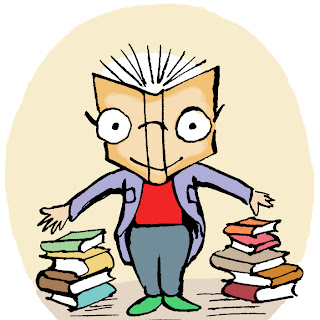Ask a Picture Book Editor
Picture books that make us laugh!
Whether it’s a giggle or a guffaw, a chuckle or a chortle, there’s no denying that everyone LOVES to laugh. But how can you help ensure that your funny texts are going to make your readers smile and become a firm favourite?
1 - Have you got a comedy character/cast of characters?
You could consider exaggerating and accentuating the comic personality traits of your characters to escalate humour and drama (and laughs!). Just like the bear and duck buddies in Goodnight, Already.
 |
| Goodnight, Already by Jory John, illlustrated by Benji Davies |
Make their exploits larger than life and increasingly anarchic for maximum comedy drama. In Z is for Moose we see a loveable Moose desperately trying to impose himself at every stage of the alphabet - much to the annoyance of the other objects and animals in the book, especially his friend Zebra!
 |
| Z is for Moose, by Kelly Bingham, illustrated by Paul Zelinsky |
Or perhaps make their voices talk direct to the reader. Encourage the child to interact with your characters and cause mischief and mayhem in your book - just like the cheeky cats in Viviane Schwarz’s There Are Cats in this Book.
 |
| There Are Cats in this Book, by Viviane Schwarz |
*TOP TIP - amplify and exaggerate silly traits to ramp up the comic impact of your characters!
2 - Consider your scenarios to create a unique comic premise
Sometimes it’s the simplest of narrative arcs that can reap the funniest rewards. The hilarious slapstick tale in the much-loved classic Rosie’s Walk, by Pat Hutchins, is a perfectly timed comedy romp following one hungry fox’s attempts to catch his dinner.
 |
| Rosie's Walk, by Pat Hutchins |
Or you might consider trying a completely zany, anarchic and off-beat idea. Try exploring situations and ideas that are totally unexpected:
Kes Gray's hilarious rhyming antics in Oi Frog!, illustrated by Jim Field, entice young readers to join in and invent their own possibilities.
"Lions sit on irons . . " and "parrots sit on carrots . . ." – of course!
Mo Willems’ Don’t Let the Pigeon Drive the Bus! is a brilliant example of a wonderfully witty and wacky premise that promises lots of laughs, empowering young readers to side with the narrator and stop the naughty pigeon.
Kes Gray's hilarious rhyming antics in Oi Frog!, illustrated by Jim Field, entice young readers to join in and invent their own possibilities.
 | |
| Oi Frog! by Kes Gray and Jim Field |
"Lions sit on irons . . " and "parrots sit on carrots . . ." – of course!
 |
| from Oi Frog! by Kes Gray and Jim Field |
Mo Willems’ Don’t Let the Pigeon Drive the Bus! is a brilliant example of a wonderfully witty and wacky premise that promises lots of laughs, empowering young readers to side with the narrator and stop the naughty pigeon.
 |
| Don't Let the Pigeon Drive the Bus!, by Mo Willems |
Alternatively, why not take a word or object that’s guaranteed to make children giggle and weave a super silly story around it. Who couldn’t help but chuckle all the way through Steve Smallman’s Poo in the Zoo:
 |
| Poo in the Zoo, by Steve Smallman, illustrated by Ada Grey |
“There was tiger poo, lion poo, prickly porcupine poo,
Plummeting giraffe poop that landed with a splat.
Dollops of gnu poo, bouncy kangaroo poo,
A trail of drippy droppings from a fat wombat!”
|
or Claire Freedman's Aliens Love Underpants?!
 |
| Aliens Love Underpants, Claire Freedman, illustrated by Ben Cort
"Aliens love underpants, in every shape and size,
But there are no underpants in space, so here's a big surprise...."
|
3 - Think about ways to weave humour into the tone of your author voice.
Mark Sperring is a master at making the everyday humorous through the tone in his writing. In Max and the Won’t Go to Bed Show we see a fairly mundane bedtime routine turned into a marvellously funny romp by some perfectly pitched comedy writing.
 |
| Max and the Won't Go to Bed Show, by Mark Sperring, illustrated by Sarah Warburton |
Or perhaps consider funny ways to describe specific scenarios. In Hoot Owl Sean Taylor weaves a tale of suspense as the reader follows the exploits of one wise owl who believes he’s the master of disguise. Sadly Hoot Owl’s not as successful as he aspires to be and his comic ineptitude is amplified by the author’s choice of depiction. For instance, we have 'night that’s as dark as burnt toast' and 'eyes that glitter like sardines' - brilliant! It’s these touches of perfectly placed funny description that ramp up the humour of Hoot Owl’s thwarted exploits.
 |
| Hoot Owl, by Sean Taylor, illustrated by Jean Julian |
Also consider your use of language. Techniques like alternation and rhythm can help build drama and escalate comedy silliness. In Never Tickle a Tiger, Pamela Butchart uses some fabulous rhythmic alliteration to depict fidgety Izzy’s action packed trip to the zoo where a cumulating series of events ends in a calamitous finale.
 |
| Never Tickle a Tiger, by Pamela Butchart, illustrated by Marc Boutavant |
But perhaps the most important tip is to consider whether your writing makes you laugh! If you’ve managed to make yourself chuckle then that’s half the battle won! Happy writing!
Natascha Biebow is an experienced editor, mentor and coach, who loves working with authors and illustrators at all levels to help them to shape their stories. www.blueelephantstoryshaping.com
Check out the Cook Up a Picture Book Coaching Courses.























Great insights into humour, thank you, and love these books! 👍🏻
ReplyDeleteHumour is a serious business!!
ReplyDeleteGreat article & food for thought. My current manuscript thanks you!
ReplyDelete